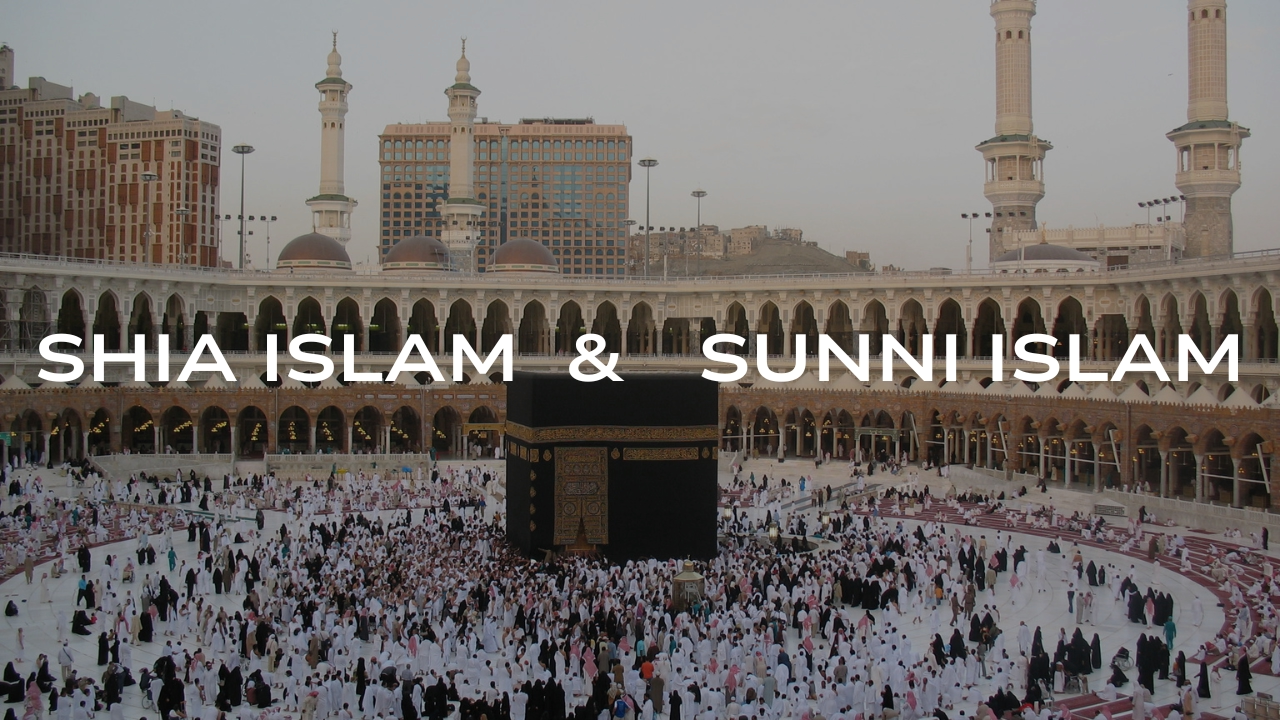Table of Contents
- Introduction: Defining the Two Traditions
- A Brief Historical Background
- Religious Differences in Practice
3.1. The Call to Prayer (Azaan): Detailed Differences
3.2. Ritual Observances: Ashura and Other Ceremonies
3.3. The Imamate in Shia Islam : A Closer Look at the Lineage - Geographical Distribution and Demographics
- Conclusion: Embracing Diversity in Devotion
- FAQs
Introduction: Defining the Two Traditions
Islam is a rich tapestry of diverse traditions, with Sunni Islam and Shia Islam standing as its two major threads.
- Shia Islam centers on the belief in a divinely ordained lineage of spiritual leaders—the Imams—beginning with the Prophet Muhammad’s cousin and son-in-law, Imam Ali.
- Sunni Islam emphasizes a community-based leadership system established by the Prophet’s companions.
In this post, we focus on the daily religious practices that set these traditions apart—diving into the nuanced differences in the Azaan, the unique concept of the Imamate in Shia Islam, and supporting these insights with various reflections on tradition.
Sunni and Shia: A Brief Historical Background
The split between Shia Islam and Sunnism emerged soon after the Prophet Muhammad’s death due to a dispute over leadership. One group championed divinely appointed leadership from the Prophet’s family, while the other supported a consensus-based caliphate. For a more extensive historical overview, please refer to our History of Shia Islam post.
Religious Differences of Sunni and Shia
The Call to Prayer (Azaan): Detailed Differences
The Azaan—the call to prayer—is not only a daily summons to worship but also a subtle expression of each tradition’s theological emphasis.
- Sunni Azaan:
- Standard Wording: Typically includes the phrases:
- “Allahu Akbar, Allahu Akbar” (God is the greatest, God is the greatest)
- “Ash-hadu an la ilaha illallah” (I bear witness that there is no deity except Allah)
- “Ash-hadu anna Muhammadan Rasul Allah” (I bear witness that Muhammad is the Messenger of Allah)
- “Hayya ‘ala-s-Salah” (Come to prayer) and “Hayya ‘ala-l-Falah” (Come to success)
- Tone and Cadence: The call is recited with a rhythmic clarity intended to unite the community in collective worship.
- Standard Wording: Typically includes the phrases:
- Shia Azaan:
- Additional Phrasing: Often includes an extra phrase such as:
- “Ashhadu anna Aliyyan waliyyu Allah” (I bear witness that Ali is the vicegerent of Allah)
- Alternatively, “Hayya ‘ala khayr al-‘amal” (Come to the best of deeds) may replace “Hayya ‘ala-l-Falah,” emphasizing ethical conduct and the spiritual role of the Imams.
- Reflective Tone: The recitation typically has a more contemplative, sometimes somber, tone—a reflection of historical sacrifice and the weight of spiritual legacy.
- Additional Phrasing: Often includes an extra phrase such as:
Ritual Observances: Ashura and Other Ceremonies
Ashura is a cornerstone of Shia ritual life, marking a day of deep historical and emotional significance.
- Shia Observance of Ashura:
- Deep Mourning: Ashura commemorates the martyrdom of Imam Hussein at Karbala—a symbol of sacrifice and the struggle against oppression.
- Ceremonial Practices: Rituals include processions, passion plays (ta’ziya), and in some communities, symbolic self-flagellation. These practices evoke empathy for Imam Hussein’s suffering and reinforce values of justice and resistance.
- Sunni Observance of Ashura:
- Reflective Fasting: Many Sunni Muslims mark Ashura by fasting and engaging in extra prayers, recalling events such as the deliverance of Moses from Pharaoh.
- Subdued Reflection: The day is observed more quietly, focusing on repentance and spiritual renewal rather than the dramatic commemorations found in Shia communities.
The Imamate in Shia Islam: A Closer Look at the Lineage
A defining feature of Shia Islam is the Imamate—the belief in a divinely chosen, infallible line of spiritual leaders.
- The Twelve Imams of Twelver Shia Islam:
The Twelver tradition reveres the following Imams:- Imam Ali ibn Abi Talib: The first Imam, celebrated for his piety and justice.
- Imam Hasan ibn Ali: Known for his commitment to peace and reconciliation.
- Imam Husayn ibn Ali: The martyr of Karbala, whose sacrifice remains a beacon of resistance.
- Imam Zayn al-Abidin (Ali ibn Husayn): Esteemed for his deep spirituality and extensive supplications.
- Imam Muhammad al-Baqir: A key figure in developing early Islamic jurisprudence.
- Imam Ja’far al-Sadiq: Instrumental in formulating Shia jurisprudence and theology.
- Imam Musa al-Kadhim: Renowned for his patience and spiritual insight during times of persecution.
- Imam Ali al-Ridha (al-Ridha): Celebrated for his intellectual contributions and moral authority.
- Imam Muhammad al-Taqi (al-Jawad): Known for his wisdom despite his youth.
- Imam Ali al-Hadi (al-Naqi): Recognized for his leadership amid political challenges.
- Imam Hasan al-Askari: His life was marked by secrecy and the safeguarding of spiritual knowledge.
- Imam Muhammad al-Mahdi (the Hidden Imam): Believed to be in occultation, he is awaited as the messianic figure who will restore justice. For further insights on his anticipated role, please refer to our Imam Mahdi post.
- Foundations of the Imamate:
The belief in the Imamate is deeply rooted in the enduring legacy of the Prophet’s family. This concept has shaped the rituals, practices, and community identity within Shia Islam. - Broader Context:
While Twelver Shia Islam is the largest branch, other Shia sects (such as Ismailism and Zaidi Shia Islam) have their own distinct lineages and interpretations, adding depth to the diverse mosaic of Shia belief.
Geographical Distribution and Demographics

Understanding where these traditions are predominantly practiced helps illuminate their global impact:
- Sunni Islam
- Adherents: Approximately 85-90% of the global Muslim population—roughly 1.5 to 1.8 billion people—are Sunni.
- Geographical Distribution: Sunni Islam is predominant in countries such as Saudi Arabia, Egypt, Turkey, Indonesia, Pakistan, and many other parts of the Arab world, South Asia, and Southeast Asia.
- Shia Islam:
- Adherents: Shia Muslims constitute about 10-15% of the global Muslim population, estimated at around 200-250 million people.
- Geographical Distribution: Shia Islam is primarily practiced in Iran, Iraq, Bahrain, and Azerbaijan, with significant communities in Lebanon, Yemen, and parts of South Asia (notably in Pakistan and India). In several countries—such as Iraq and Lebanon—both Sunni and Shia communities coexist, contributing to a complex cultural tapestry.
Conclusion: Embracing Diversity in Devotion
Although Shia Islam and Sunnism share the core tenets of Islam, their distinct expressions in daily rituals—evident in the nuanced differences of the Azaan, the evocative observance of Ashura, and the central role of the Imamate—offer a rich spectrum of spiritual expression. These differences are not merely academic; they shape the lived religious experience of millions across diverse geographical landscapes.
By understanding these differences and appreciating the global distribution of these traditions, we can better grasp how Muslims worldwide connect with their faith, honor their heritage, and express their devotion.
FAQs
Q1: What are the exact differences in the Azaan between Shia and Sunni Muslims?
A1: The Shia Azaan includes an extra phrase such as “Ashhadu anna Aliyyan waliyyu Allah” and may use “Hayya ‘ala khayr al-‘amal” instead of “Hayya ‘ala-l-Falah.” In contrast, the Sunni Azaan follows a standardized format emphasizing community unity.
Q2: Who are the Imams in Shia Islam, and why are they so important?
A2: In Twelver Shia Islam, the twelve Imams—from Imam Ali to Imam Muhammad al-Mahdi—are regarded as divinely chosen, infallible spiritual guides whose teachings and sacrifices form the foundation of Shia identity.
Q3: How do the differences in the Azaan and Ashura observances affect daily religious life?
A3: These differences reinforce theological beliefs and shape community identity by linking everyday worship to historical events and the enduring legacy of the Imams.
Q4: What is the significance of Imam Mahdi in Shia Islam?
A4: Imam Mahdi, the twelfth Imam, is believed to be in occultation and will return as a messianic figure to restore justice. For further details, please refer to our Imam Mahdi post.
Q5: Where are Sunni and Shia communities predominantly found?
A5: Sunni Islam is practiced by approximately 1.5 to 1.8 billion people worldwide, predominantly in the Middle East, South Asia, and Southeast Asia, while Shia Islam is primarily found in Iran, Iraq, Bahrain, Azerbaijan, and parts of Lebanon and South Asia.



